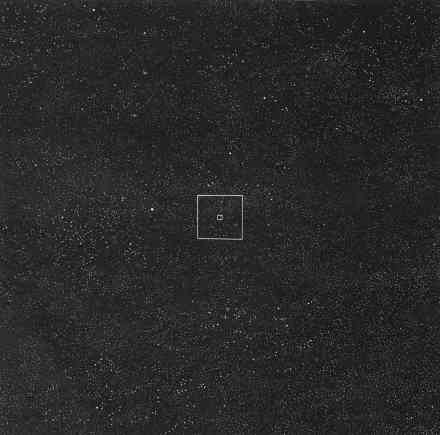| 26. |
In this last picture of the series at reduced scales, we naturally find that all galaxies
and groups of galaxies, even the largest of them, are reduced to dots of
various sizes. It goes without saying that the placing of them has been of necessity
quite arbitrary. The object is merely to give a very faint idea of the inconceivably
large number of galaxies in the midst of which our Milky Way is
placed. The number of galaxies which are visible with our present telescopes is
of the nature of a thousand million. The farthest of these would be at a distance
from the earth of 2,000 million light years, that is, something like the length of
a diagonal of the large square above. What is drawn here is therefore certainly
less than what exists. For the galaxies would be much nearer to each other than
the picture shows, and they would continue far beyond its confines. . . .
|
1 cm. in picture = 1026 cm. = about 100 million light-years. | Scale = 1:1026 |
|
